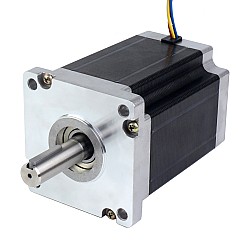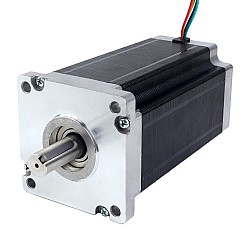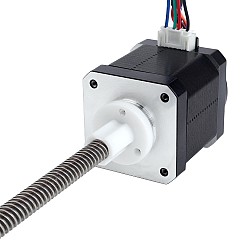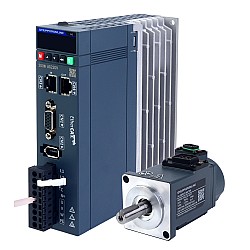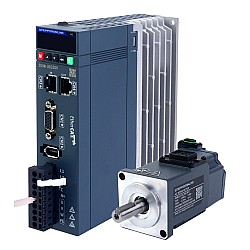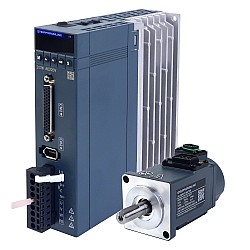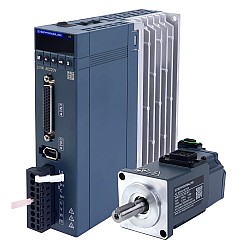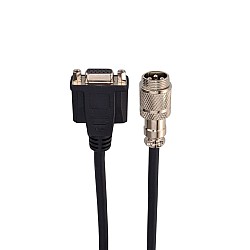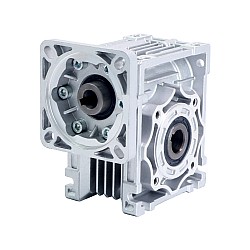| NMRV40 Worm Gearbox | ||||||||
| NMRV40 | ||||||||
| Flange size | mm | 86×86 | ||||||
| Mounting hole center distance | mm | Φ90~Φ97 | ||||||
| Ratio | / | 5 | 7.5 | 10 | 15 | 20 | 30 | 50 |
| Rated output torque | Nm | 40 | 45 | 38 | ||||
| Rated input speed | RPM | 1500 | ||||||
| Maximum radial load | KN | 1.18 | 1.31 | 1.44 | 1.65 | 1.82 | 2.08 | 2.47 |
| Efficiency | % | 87 | 85 | 83 | 82 | 78 | 70 | 62 |
| Backlash | ° | 1 | ||||||
| Life | h | 6000 | ||||||
| Operating temperature | °C | ≤85 | ||||||
| Lubrication method | / | ISO Vg320 | ||||||
| Input shaft diameter | mm | Φ14 | ||||||
| Input shaft length | mm | ≤35 | ||||||
What is a worm gearbox and how does it work?
As the name implies, a worm gearbox is a box that contains worm gears. It is also often referred to as a worm gear reducer, and these terms essentially refer to the same thing. A worm gearbox functions like any gear system in that it can increase torque and decrease speed between a drive device such as a motor and a load.
Worm gears are found in industrial applications, heavy equipment, and even consumer applications. While their efficiency is relatively low, they can provide very high reduction ratios and they are self-locking in many situations.
What is a worm gear?
A worm gear consists of a worm and a the worm wheel (or simply "the wheel"), whose shafts are oriented non-parallel, non-intersecting, and at 90 degrees to each other. The worm is similar to a screw with a V-thread, while the gear is similar to a spur gear. The worm is usually the driving part, and the thread of the worm drives the teeth of the gear.
Construction and characteristics of worm gears
The engagement of the worm and worm wheel is a mixture of sliding and rolling actions, but the sliding contact predominates at high reduction ratios.
This sliding action causes friction and heat generation, which limits the efficiency of the worm gear to 30% to 50%.
The worm and worm wheel are made of different metals to minimize friction and the resulting heat.
For instance, worm gears may be made of hardened steel and worm wheels of bronze or aluminum.
Though sliding contact reduces efficiency, it provides very quiet operation. In addition,
the use of different metals for the worm and worm wheel also contributes to quiet operation.
These enable the worm gear to be used where noise needs to be kept to a minimum, such as in elevators.
Furthermore, the use of softer materials for worm wheels means that it can absorb shock loads, such as those encountered in heavy equipment or crushers.
The main benefit of worm gears is that they provide high reduction ratios and corresponding high torque multipliers.
They can be used as speed reducers in low to medium speed applications.
Additionally, because their reduction ratios are determined solely by the number of teeth in the worm wheel, they are more compact than other types of gears.
Like fine-pitch lead screws, worm gears are generally self-locking, which makes them the preferred choice for lifting and hoisting applications.
How do worm gears work?
A motor exerts rotational energy to the worm. The worm circulates against the worm wheel and the screw face pushes against the worm wheel through the teeth. The worm wheel is pushed against the force.
Advantages of a worm gearbox
- High gear ratio
- High torque multiplication
- Quiet operation
- Shock load absorption
Where is a worm gearbox used?
Worm gearboxes are worth considering when your application needs to stop quickly, with shock loading, and with little space.
Due to its specific mode, worm gearboxes are used in different industrial applications. Some of the applications of worm gearboxes are as follows:
- Mining
- Presses
- Rolling mills
- Escalator/elevator drive systems
- Manufacturing and Packaging
- Conveyor belts
- Tuning instruments
- Automated gates
STEPPERONLINE worm gearboxes are available in several frame sizes and gear ratios, and have highly efficient. If you have questions or custom requests, please contact our technical support.



































































-3-200x160w.jpg)



-1-3-250x250.jpg)

